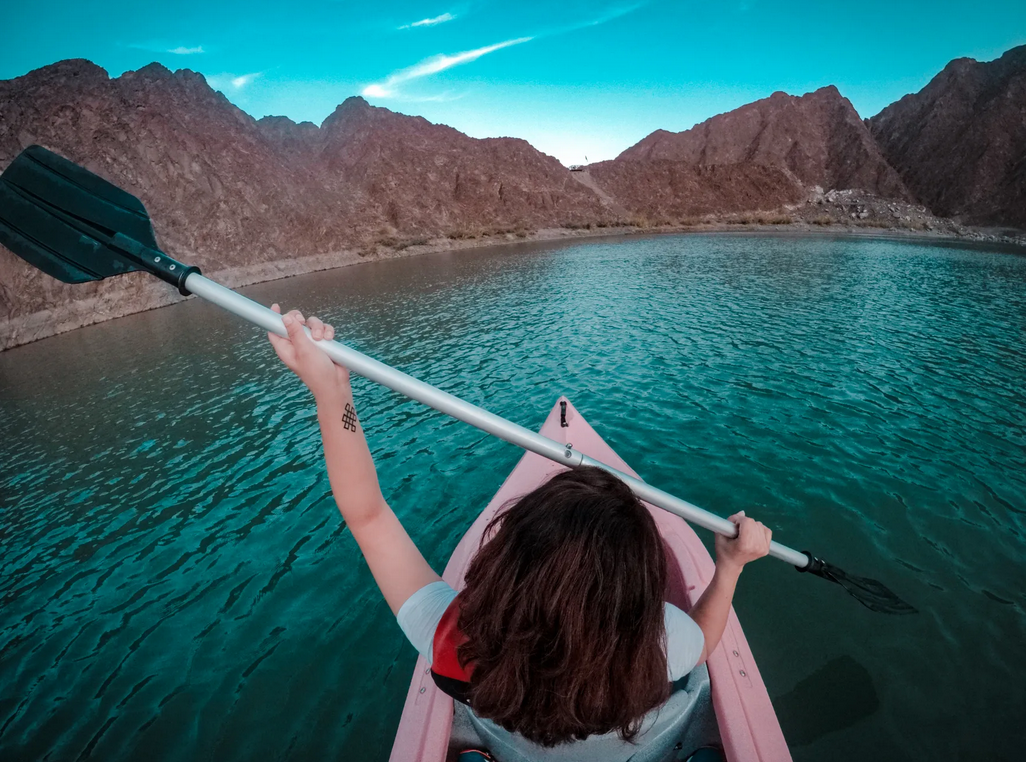Kayaking is one of the most versatile and fun watersports available. A simple kayak trip with your family and friends can give you some of the greatest experiences you’ve ever had in nature. There is a reason why a lot of watersports enthusiasts look for adventure and enjoyment in a sport like kayaking thanks to its broad range of activities and elements of exploration.
To help you hit the ground running, or paddling, we’ve made a little guide that should aid new kayakers in choosing a kayak paddle.
What is a Kayak Paddle?
Without a paddle, a kayak is pretty much a lost ship in a vast ocean. Every kayaker knows how important it is to choose a good and suitable paddle for their kayak, activity, and body. When choosing the perfect paddle for you, you should be aware that what works for someone else may not be the best for you. The measurements of your torso and kayak are also important in defining the perfect size of a paddle. Paddling techniques cannot be performed properly or safely without having a paddle of the right length and size.
Paddle Length
One of the first features that you should settle on when you’re picking a paddle is the paddle’s length. Even though it’s still a relatively straightforward process, there are many different factors that you should take into account. Your kayak’s width is a determinant of the length of your paddle; the wider the kayak, the longer the paddle should be. Your own height should be taken into consideration because you don’t want a paddle that’s too short that forces you to exert unnecessary energy or a long one that makes it hard to hold properly. There are different charts available online that can help you choose a paddle according to your height and kayak in a standardized method.
Budget for Material
When it comes to paddles, saving weight means paying more money. Since the blade of the paddle is raised higher than the shaft, having it made of light materials means that you’ll be spending less energy to stroke with the paddle. The fatigue reduction element is noticed when you keep trying to find lighter paddles. The energy of the stroke is also transferred to the blade; lighter paddles are much easier to stroke with. Try to define a budget for your paddle before getting it because you can easily find yourself in a totally different price league if you’re a beginner.
- Plastic/Nylon Blade
When it comes to low budgets, plastic blades are often the most commonly chosen type because of their cost-effectiveness and durability. It may be good for recreational paddlers who don’t want to invest a lot in paddles, but it’s important to understand that they can still be destroyed if they’re not taken care of properly. Their flexibility thanks to the properties of plastic prevents them from snapping, but they can still degrade from being left in the sun, reducing the effectiveness of your stroke.
- Fiberglass Blade
Loved by many amateur and professional kayakers, fiberglass blades are a perfect blend of durability and performance. They are even lighter than plastic, allowing them to perform better on water, but they are vulnerable to being chipped if the person using them is too vigorous. They are more efficient in strokes because of their relative rigidness.
- Carbon-Fiber Blade
If your budget allows you, you’d probably be much better off with a carbon-fiber blade. They are often the first choice of professional kayakers because of their extreme lightness and stiffness. They’ll stay durable for a long while and provide you with optimum energy for your strokes.
Angles of a Paddle
When it comes to choosing the perfect angle that suits your kayaking activities, there are two options that you’ll have to pick from. The low-angle stroke of a paddle is naturally more suited towards low-angled paddles that allow you to make relaxed and easy strokes in calm waters. High-angled paddles are known for their focus on performance, as they provide more speed thanks to their tilted shaft. The kind of strokes high-angled paddles are designed for are actually fatiguing, so you should make sure that your movements are precise to avoid wasting energy. The size charts for paddles differ according to the angle.
There is no doubt that you’ll be hooked just from trying kayaking once, but you may be a bit overwhelmed when you’re trying to get your feet wet in such a broad field. From the kayak paddles to techniques, you should expect to spend some time getting familiar with many concepts.


